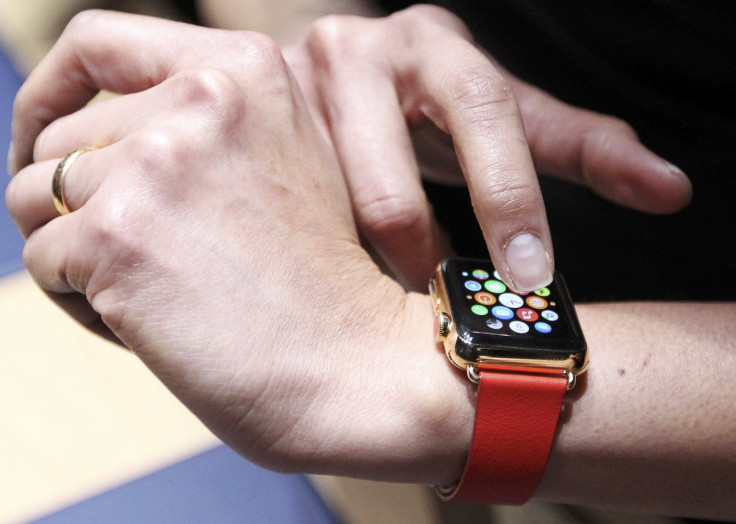Apple Watch First Look: 5 Big Problems With Much Anticipated Smartwatch

When the Apple Watch was unveiled in September, the world got its first glimpse of the company’s first smartwatch. Now, ahead of the launch of Apple Watch in April, the media are getting their hands on it and forming first impressions.
So far, the takeaways are pretty mixed. While many praised the watch for parts of its design, that didn’t keep them from highlighting certain shortcomings of the Watch based on their brief time spent with it. Here are some of their impressions:
It’s complicated.
Sometimes having too many options can be overwhelming, especially with two million ways to customize the Watch. Business Insider’s Matt Rosoff noted that this can become a barrier for some:
“The biggest barrier I see to mass adoption of the Apple Watch is that Apple Store employees will have to spend some real time with customers explaining what it can do and demonstrating it. They'll also have to explain the different models.”
The 'digital crown' can be confusing.
Eschewing pinch to zoom, Apple invented a new way to navigate the Watch, with the Digital Crown, which can be used to zoom in and out. One of the biggest changes to touchscreen navigation is also drawing some of the bigger complaints from those that spend some time with the Apple Watch.
Bloomberg’s Stephen Pulvirent noted his initial troubles with navigating the Watch:
“On first use, the device felt a little confusing and clumsy. Sometimes it seemed to do one thing; at other times, just the opposite.”
The Verge’s Nialy Patel noted a similar issue while trying to jump around the interface:
“It is really confusing to have both the Digital Crown and the communications button next to each other on the side. As I tried to navigate the Watch interface, I found myself pressing one or both several times, without knowing which one would take me to the home screen, back out of an app, or launch a feature.”
It's clunky.
The New York Times’ Farhad Manjoo notes that Apple is trying to make a device that fits into the fashion world. But he doesn’t necessarily believe the Cupertino, California, company hit that mark yet.
“I’m not quite sure Apple pulled that off in this version. The electronic watch face is a bit chunky compared with the high-end band, so the overall impression is one of a mash-up between jewelry and gadgets.”
If Apple's product history is any indication, Apple Watch 2.0 will be thinner, faster and probably more wearable.
What’s the use case?
When Steve Jobs unveiled the iPhone in 2007, he described it as an “iPod, a phone and an Internet communicator.” But Apple appears to have taken the opposite approach with the Apple Watch, instead aiming to show all the different ways you can use it.
It’s a problem noted by the Wall Street Journal’s Geoffrey A. Fowler, who said it still isn't clear what the defining use case will be for the Watch:
“How might Apple Watch change my life? From what I’ve seen, it might save me time. It is a second screen--a little wrist-worn sidekick to the iPhone. ... The Apple Watch could be the device that lets me leave my phone in my pocket, and still not miss anything important.”
Where are all the apps?
Onstage, Apple demonstrated some of the apps being developed, such as WeChat and Instagram, but as noted by Cnet’s David Carnoy, who attended -- Apple's Spring Forward event at the Yuerba Buena Center for the Arts in San Francisco, where the Watch was unveiled -- the “killer app” factor has yet to surface for the Watch:
“Will the apps transform the watch? The handful seen at Yerba Buena showed some promise, but didn't instantly wow. There are tons of opportunities for Apple Watch to reel in killer apps, and it'll need them to make people take interest.”
One more thing: when does it become obsolete?
While there are obvious use cases for fitness tracking, messaging and perhaps payments, we're baffled by the pricing. Why would someone pay $17,000 for a version that has no more functionality than one that costs $349, and how will those buyers feel when Apple releases a thinner, faster version in a year? And then there's the looming obsolescence: Will this watch even be useful in five years, or will an upgrade be required?
© Copyright IBTimes 2024. All rights reserved.












